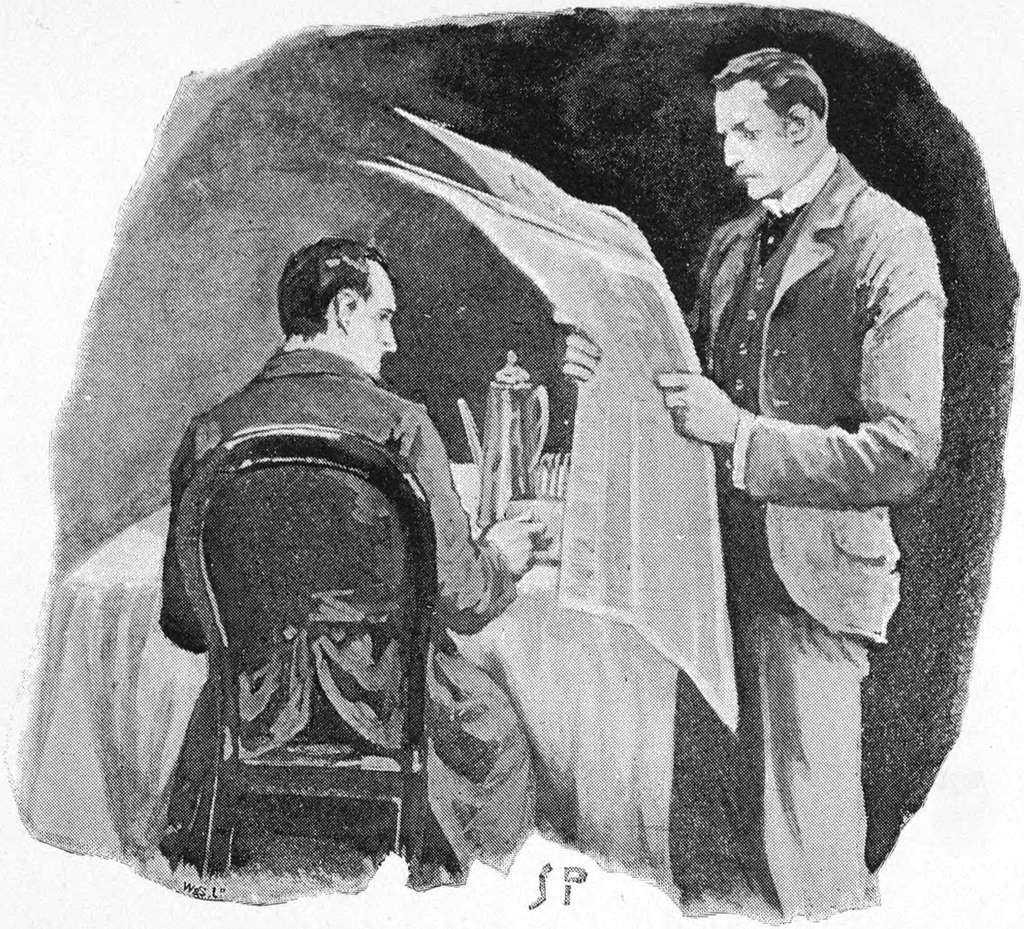
The Art of the Question: Solving Three Pipe Problems in the Age of AI
The Mystery of the Modern Problem Solver
"It is quite a three pipe problem, and I beg that you won't speak to me for fifty minutes."
When Sherlock Holmes uttered these words in "The Red-Headed League," he understood something that today's problem solvers are just rediscovering: the most meaningful challenges require deep inquiry, not quick answers. Holmes knew that rushing to conclusions would only yield superficial solutions. The world's most significant mysteries — then and now — demand the patience to sit with complexity and the wisdom to ask the right questions.
As a product leader working with nonprofits, I've observed a fascinating paradox. We live in an age of unprecedented access to information and AI-powered tools that can generate answers to almost any question. Yet many organizations struggle more than ever to solve their most pressing challenges. The reason isn't a lack of answers — it's a shortage of good questions.
The Great Information Shift
To understand our current moment, consider how dramatically the information landscape has changed:
Victorian Era (Holmes's Time): Information was scarce and precious. The challenge was finding answers. Success meant having access to knowledge that others didn't.
Digital Era (1990s-2010s): Information became abundant but overwhelming. The challenge shifted to filtering and organizing data. Success meant managing information effectively.
AI Era (Today): Answers are instantly available and infinitely customizable. The challenge is asking questions that unlock meaningful insights. Success depends on the quality of inquiry.
This shift has profound implications for nonprofit leaders. The organizations that will thrive aren't those with the best AI tools — they're those with leaders who can ask the questions that matter.
The Three Levels of Inquiry
Not all questions are created equal. I've found it helpful to think about questions in three distinct categories:
Level 1: Data Questions (Where AI Excels)
- "What are our donation trends this quarter?"
- "How many people opened our last email campaign?"
- "What's our donor retention rate by segment?"
These questions have clear, factual answers. AI handles them beautifully—faster and more accurately than humans ever could.
Level 2: Strategic Questions (Human-AI Partnership)
- "What underlying motivations drive our donors' giving patterns?"
- "How do our beneficiaries define success differently than we do?"
- "What communication channels build the strongest emotional connection?"
These questions require analysis of data plus human insight about context, culture, and motivation. AI can help process information, but humans must frame the inquiry and interpret results.
Level 3: Transformational Questions (Human Territory)
- "What would need to be true for our community to no longer need our services?"
- "How might we solve the root cause instead of managing symptoms?"
- "What problems are we not seeing because of our organizational blind spots?"
These questions require wisdom, empathy, and systems thinking that only humans can provide. AI can help explore these questions once asked, but cannot generate them independently.
Case Study: The Power of Better Questions
Consider the story of Veronika Scott and The Empowerment Plan, which beautifully illustrates how better questions lead to transformational solutions. In 2010, Scott was a college design student tasked with creating a product for Detroit's homeless population. Her initial question was straightforward: "How can I design a better coat for people experiencing homelessness?"
She developed a clever solution — a coat that could transform into a sleeping bag using recycled materials. But when she brought prototypes to a local shelter, a woman confronted her: "We don't need coats. We need jobs." That moment forced Scott to ask a completely different question: "What do people experiencing homelessness actually need to transform their circumstances?"
This reframe led to The Empowerment Plan's revolutionary model: employing homeless parents to manufacture the coats while providing job training, stable income, and a pathway to permanent housing. What began as a product design challenge became a systematic solution to homelessness itself.
The difference? A better question that looked beyond symptoms to address root causes.
The Design Thinking Detective Method
As a product leader, I've seen how design thinking transforms organizations' ability to ask meaningful questions. The five-mode framework isn't just for designers — it's a systematic approach to inquiry that any nonprofit can apply:
1. Empathize: "Who am I really trying to serve?"
- Shadow a donor through their entire giving journey
- Spend time with program beneficiaries in their environment
- Listen for what people don't say as much as what they do
2. Define: "What's the real problem, not just the obvious symptom?"
- Use "How Might We" questions to reframe challenges
- Distinguish between problems you can solve and problems you should solve
- Look for patterns across different stakeholder experiences
3. Ideate: "What if we approached this completely differently?"
- Generate quantity before judging quality
- Ask questions that challenge organizational assumptions
- Explore solutions outside your typical domain
4. Prototype: "How can we test this assumption quickly?"
- Create small experiments before major investments
- Use AI to rapidly test messaging variations
- Build feedback loops into every initiative
5. Test: "What did we learn that we didn't expect?"
- Measure behavior change, not just metrics
- Document failures as valuable learning
- Let results inform your next cycle of questions
The Working Backwards Framework
One of the most powerful question-generation tools comes from Amazon's product development process. Instead of starting with what you can build, start with what success looks like for the people you serve.
Here's how it works:
- Write the press release first: Imagine your program has succeeded beyond your wildest dreams. What would the headline say?
- Create the FAQ: What questions would stakeholders have about this success? How would you answer them?
- Define the user experience: How would beneficiaries or donors experience this success?
- Identify success metrics: What would you measure to know you'd achieved this vision?
- Work backwards to today: What would need to be true to make this vision reality?
For example, instead of asking "How do we improve our food distribution program?", you might write: "Local Food Bank Eliminates Food Insecurity in Downtown District Through Innovative Community Partnership Model."
This immediately generates better questions:
- What would "elimination" actually look like?
- What partnerships would make this possible?
- How would we measure true food security vs. just food distribution?
- What would need to change about our current model?
Jobs to Be Done: Understanding the Deeper "Why"
Clayton Christensen's Jobs to Be Done framework offers another powerful lens for question generation. The core insight: people don't want products or services — they want to make an impact in their life. The best way to understand this framework is to think about this question: "What job does the donor want to hire my organization to achieve?" It may be a strange way to think about it, but helps uncover the hidden root of donor intent.
The framework uses this structure: "When _____, I want to _____, so I can _____."
For donors: "When I see suffering in my community, I want to contribute to meaningful solutions, so I can feel I'm making a real difference in the world."
For program participants: "When I'm struggling with housing instability, I want access to support that treats me with dignity, so I can rebuild my life without losing my sense of self-worth."
This framework shifts your questions from organizational needs ("How do we increase donations?") to human needs ("What job is a donor trying to hire our organization to do?").
The AI Partnership Protocols
Understanding these frameworks is crucial, but the rubber meets the road when you're actually working with AI tools. The quality of your AI interactions depends entirely on the quality of your prompts — which are really just questions in disguise.
Consider these three approaches to the same challenge:
Poor Question: "Write a fundraising email."
Better Question: "Write a fundraising email for our education nonprofit targeting donors who gave $100-500 last year."
Best Question: "You're writing to Sarah, a 45-year-old professional who donated $250 last year after her daughter struggled with reading. She values personal connection and clear impact. Write an email that shows how her gift specifically helps children like her daughter, includes a concrete story, and offers a clear next step for deeper engagement."
The difference isn't just specificity — it's perspective. The best question takes the donor's viewpoint and considers their emotional journey, not just their demographic profile.
Case Study: Girls Who Code and the Power of Reframing
Reshma Saujani's journey with Girls Who Code demonstrates how better questions can transform entire movements.
When Saujani started the organization in 2012, her initial question seemed clear: "How do we teach girls to code?" The gender gap in technology was well-documented, and the solution seemed straightforward—provide coding education. But as the program grew, Saujani noticed something troubling. Girls were learning technical skills but still dropping out of technology careers. The coding education wasn't creating lasting change.
This led to a crucial reframe: "What causes girls to not see themselves as technologists?"
Through deep empathy work — actually listening to the girls in their programs—Saujani discovered the real barriers weren't technical but cultural and psychological. Girls needed not just skills but confidence, community, and ongoing support systems. This insight led to Girls Who Code's comprehensive approach: after-school clubs, alumni programming, corporate partnerships, and advocacy for systemic change. The question shift from "how to teach coding" to "how to create lasting support systems" transformed both the organization and the broader conversation about women in technology.
Today, Girls Who Code has reached over 500,000 girls and fundamentally shifted cultural perceptions about who can be a programmer.
The Critical Thinking Framework for Better Questions
Before prompting any AI tool or launching any initiative, run your questions through these four filters:
1. Assumption Check: "What am I assuming in this question?"
- Are you assuming you know what success looks like?
- Are you assuming you understand your stakeholders' motivations?
- Are you assuming the problem is what it appears to be?
2. Perspective Check: "Whose viewpoint am I taking?"
- Are you asking from your organization's perspective or your stakeholders'?
- Have you considered multiple viewpoints on this challenge?
- Whose voices might be missing from your inquiry?
3. Scope Check: "Am I asking about symptoms or root causes?"
- Does this question address what's happening or why it's happening?
- Are you looking for quick fixes or systematic solutions?
- How does this challenge connect to larger systems?
4. Outcome Check: "What will I do with this answer?"
- Will the answer lead to actionable insights?
- How will you measure whether the answer is valuable?
- What decision will this information help you make?
Building a Question-Driven Organization
The most innovative nonprofits I work with have made a fundamental shift in their organizational culture. They've moved from being organizations that have answers to organizations that ask better questions.
Traditional Model:
- Departments are expected to have solutions
- Hierarchy provides direction and answers
- Success measured by efficiency and output
- Expertise valued over curiosity
Question-Driven Model:
- Departments generate better questions
- Curiosity drives direction and strategy
- Success measured by learning and impact
- Inquiry valued alongside expertise
At Virtuous, we've implemented what we call "question first" product development. Before building any feature, we spend time understanding not just what nonprofits want, but what jobs they're trying to accomplish and what questions they're trying to answer. In product development, this is known as carefully identifying the "Problem Space." It's second-nature to jump to solutions, but if we don't fully understand the problems we're trying to solve, our solutions may end up way off the mark.
This shift has transformed both our product quality and our team culture. Instead of rushing to solutions, we invest time in understanding problems deeply. Instead of defending our ideas, we test our assumptions quickly and adjust based on what we learn.
Your Daily Practice: The Question Discipline
Becoming a professional question-asker requires intentional practice. Here's a simple framework you can implement immediately:
Morning Question (Strategy): "What don't I understand about the people I'm trying to serve?"
This keeps you oriented toward learning rather than assuming. It might lead you to schedule more stakeholder interviews, review feedback you've been avoiding, or challenge assumptions your team takes for granted.
Midday Question (Reality Check): "What assumptions am I making that might be wrong?"
This creates pause points for reflection during busy days. It helps you notice when you're operating on autopilot or when your biases might be influencing your judgment.
Evening Question (Growth): "What did I learn today that changes how I should approach tomorrow?"
This turns daily experiences into learning opportunities. It helps you notice patterns and adjust your approach based on new information.
The Weekly Question Audit
In addition to daily practice, conduct weekly reviews of your organization's question quality:
Monday: What questions did we ask AI tools this week? Tuesday: Which questions led to actionable insights? Wednesday: Which questions were too narrow or organization-focused? Thursday: What questions should we have asked but didn't? Friday: How can we ask better questions next week?
This practice helps teams notice patterns in their inquiry habits and continuously improve their approach.
Your Three Pipe Problem Challenge
Like Holmes settling in with his pipe to contemplate a complex mystery, I want to challenge you to slow down and engage with one meaningful question.
Choose one stakeholder group that's critical to your mission—major donors, program participants, community partners, or volunteers. For the next week, resist the urge to solve anything for them. Instead, commit to understanding them more deeply.
Ask yourself:
- What questions am I not asking about this group?
- What assumptions am I making about their motivations?
- How might they describe success differently than I do?
- What would I need to understand to serve them better?
Use AI tools to help you analyze what you learn, but start with genuine human curiosity. Schedule conversations, send surveys, observe behavior, and really listen to responses.
At the end of the week, you'll likely discover that the questions you thought you needed to ask weren't the right questions at all. You'll have uncovered insights that no AI tool could have generated because they required human empathy and careful inquiry.
The Future Belongs to Question-Askers
As AI becomes more sophisticated, the competitive advantage won't belong to organizations with the best technology — it will belong to those with the best questions. The nonprofits that create lasting impact will be those that combine AI's analytical power with human wisdom about what matters most.
The art of asking better questions isn't just a professional skill — it's a calling. In a world full of noise, surface-level solutions, and algorithmic thinking, the ability to inquire deeply about what truly matters becomes a form of leadership.
Your donors, supporters, and community are waiting for someone to ask the questions that matter. To look beyond the obvious symptoms and explore root causes. To design solutions that serve human needs rather than organizational convenience.
The world doesn't need more answers — it needs better questions. And the future belongs to those who master the art of asking them.
What question will you ask first?




